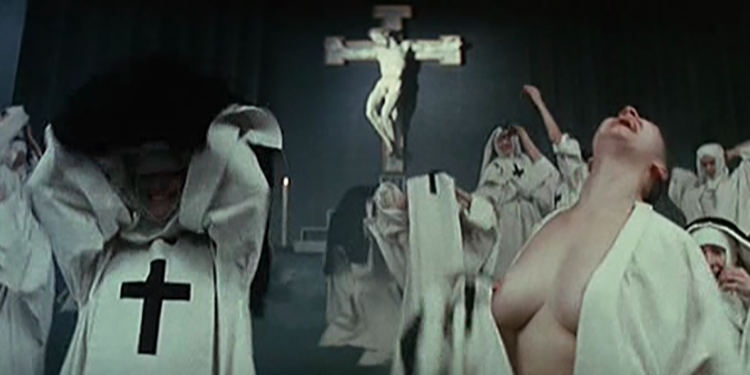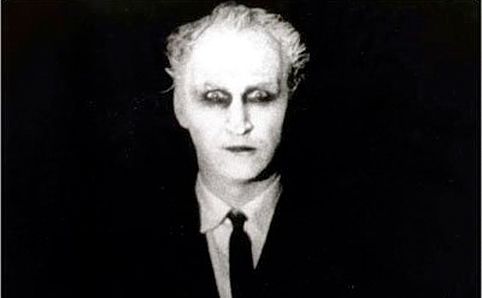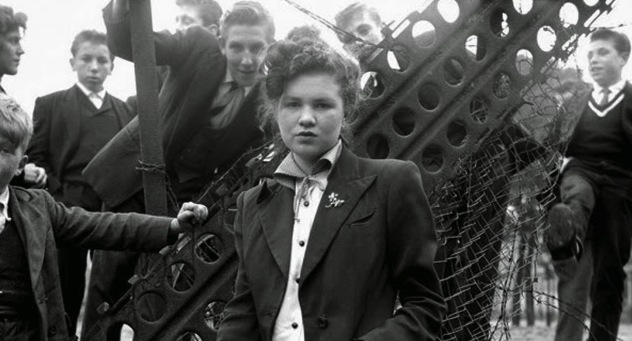In a word, we can say carnal disorder corresponds to spiritual direction, that is to say, carnal disorder as a discursive domain, field of intervention, and object of knowledge for this spiritual direction. The complex and floating domain of the flesh as a domain of the exercise of power and objectification begins to stand out from the body, from the corporeal materiality that the penitential theology and practice of Middle Ages merely identified as the origin of sin.
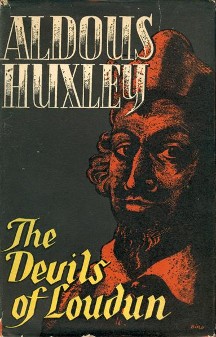 With this statement, Michel Foucault introduces the reader to the main topic of his 26 February 1975 lesson at College de France. On the same day, the great French philosopher quotes a dark and obscure event of Church history in France. The Devils of Loudun. What’s that? If we want to be as brief as possible, we can say this: a mass possession in Loudun convent. The previous quote from Foucault explains the strange connection between this event, their “spiritual” links and their carnal externalizations. Can we say something more about this? Absolutely. In 1971, Ken Russell directed one of the most controversial films ever about religion, The Devils. The script of the movie is based on a non-fiction novel written by Aldous Huxley (the same who wrote The Doors of Perception) while the scenography of Loudoun’s borough was made by Derek Jarman. Two of the greatest names in British cinema are involved in a movie which is based on a non-fiction book of one the most interesting novelists of the 20th century.
With this statement, Michel Foucault introduces the reader to the main topic of his 26 February 1975 lesson at College de France. On the same day, the great French philosopher quotes a dark and obscure event of Church history in France. The Devils of Loudun. What’s that? If we want to be as brief as possible, we can say this: a mass possession in Loudun convent. The previous quote from Foucault explains the strange connection between this event, their “spiritual” links and their carnal externalizations. Can we say something more about this? Absolutely. In 1971, Ken Russell directed one of the most controversial films ever about religion, The Devils. The script of the movie is based on a non-fiction novel written by Aldous Huxley (the same who wrote The Doors of Perception) while the scenography of Loudoun’s borough was made by Derek Jarman. Two of the greatest names in British cinema are involved in a movie which is based on a non-fiction book of one the most interesting novelists of the 20th century.
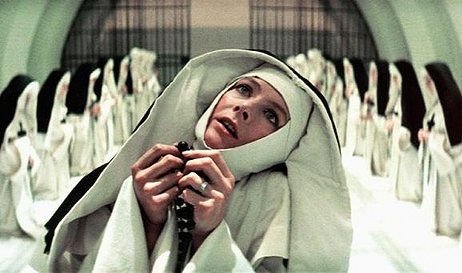
Apart from the interest that arose from this mass possession, we should focus on what happened: a Catholic priest, Urbain Grandier, was involved with several sexual relationships during his permanency in Saint Croix Church of Loudoun. In 1632, Father Grandier was accused of having sent Asmodeus, a great devil, to the Ursuline convent. This accusation, made by Jeanne of the Angels, the mother superior of the nuns, is suspected to be completely false (upmost by Huxley, whose opinion about this event had to be connected to a form of mass hysteria). It’s possible that the entire process was created on purpose by Cardinal Richelieu to eliminate irksome Grandier. This Catholic priest refused to confess to any connection with evil forces. There’s almost a certainty that the proof brought by accusation – a diabolical oath written in backward Latin with signs by several devils and Satan himself – is completely false (for those who follow Death Metal: the sheet on the front cover of Morbid Angel’s Covenant? That’s a copy of Grandier’s false oath). The Devils shows the story from this point of view; Loudoun was a strategical standpoint that needed to be neutralized by Richelieu and nothing could stop the power of France’ Court, even the sincere faith of Grandier. The movie swings between a comical side and the tragic development of the plot. One could say that this is the typical case of Catholic delirium and terrorism: and probably that was Ken Russell’s purpose at the time. Effectively, we’re looking at a situation which is so common in various religious traditions – mystification of the body. In The Devils, we will see the sexual chastity as the main social motive of Jeanne of the Angels’ accusation, while the rest of the cause could be the segregation that nuns experience in Catholic convents of XVII century France: that’s abnormal. Following this train of thought, we will be led to Foucault’s studies about this form of abnormality; the French philosopher has showed us that the use of body in religion has led to two different forms of mystification: a higher one, which is connected to Catholic mysticism, and a lower and more popular one, possession. In our case, the second, we need to distinguish possession by witchcraft, because the first one is an internal problem, while the second is an external one in terms of Catholic system of power.
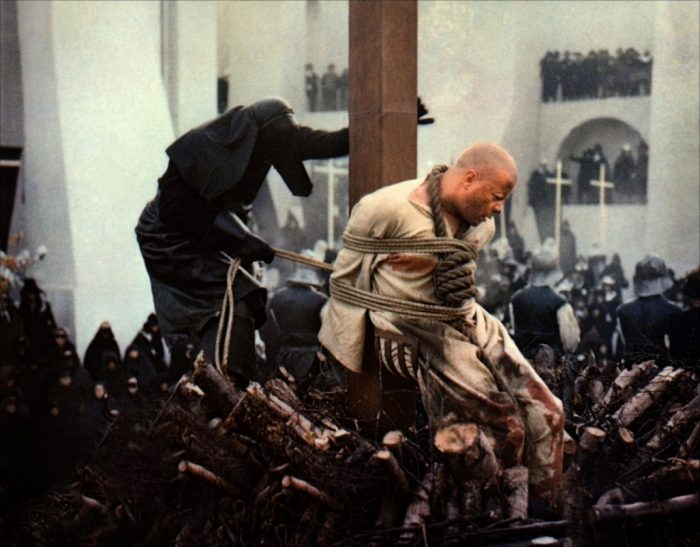
We can say that the possessed endlessly fragments and divides the witch’s body. Previously, taking the schema of witchcraft in its simple form, the witch’ s body was a somatic singularity for which the problem of division did not arise. The witch’s body was simply a servant of the devil or was surrounded by a number of powers. The body of the possessed is a multiple body that is somehow volatized and pulverized into a multiplicity of powers that confront each other, a multiplicity of forces and sensations that beset it and pass through it. This indefinite multiplicity, rather than the great duel between good and evil, generally characterizes the phenomenon of possession. (pg. 207)
The witch made an oath with the devil to obtain his power – the possession defines a victim of Satan or Satanism which is trying to fight for the control of his own body. Then Foucault continues:
The will does and does not desire. Thus, in the Loudon case, in the story of Mother Jean des Anges, the subtle play of the will on itself, both asserting itself and immediately giving way, can be seen very clearly. The exorcists said to Mother Jean des Anges that the demon produced sensations in her such that she was unable to see that it was the demon at work. Mother Jean des Anges, however, knew perfectly well that when the exorcists told her this they did not speak the truth even so and had not plumbed the depths of her heart. She knew that it was not as simple as this and that if the demon was able to produce in her these sensation behind which he hid, then this was because she had allowed him to do so. The sensations are introduced through a game of little pleasures, imperceptible sensations, tiny consents, and a sort of permanent slight connivance in which will and pleasure are entwined, somehow twist around each other and produce a deception: a deception for Mother Jean des Anges, who only saw the pleasure and not the evil, and deception for the exorcists as well, since they thought it was the devil. (pg. 210)
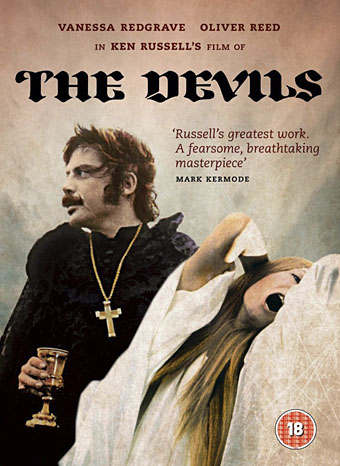
The body and its sexual intercourses has brought the juridical wisdom of reformed Catholicism to a crash; that’s what the Ken Russell’s movie and the Foucault’s lesson has showed us. In particular, we can find the old Inquisition methods but at the same time the typical places of possession (little cities of Catholic countries).
What I think happened in this affair, and we could no doubt find the same mechanism in the Aix and other cases, is that when the Church was confronted with these phenomena that both followed the trajectory of its new techniques of power and were, at the same time, the moment or point at which these techniques came up against their limits and point of reversal, it sought to control them. It sought to liquidate these conflicts arising from the very technique it used to exercise power. Then, since it lacked the means to control these effects of the new mechanism of power it had installed, it reinscribed the phenomenon that it was forced to observe in the old procedures of control typical of the witch-hunts, and it could only dominate it by retranscribing it in terms of witchcraft. That is why, when it was faced with these phenomena of possession spreading the Ursuline convent of Loudon, it had to find the witch at any cost. In the event the only person who could play the role of witch was precisely someone who belonged to the Church, since everyone involved at the start was ecclesiastical. The result was that the Church was obliged to cut itself off from one of its members and designate a priest as the witch. Urbain Grandier, the priest of Loudon, was required to play the role of the witch; he was inevitably assigned this role in what was a typical case of possession. (pg. 215-216)
Sources:
Michel Foucault, Abnormal, Courses at the Collége de France 1974-1975, Verso, New York – London, 2003

